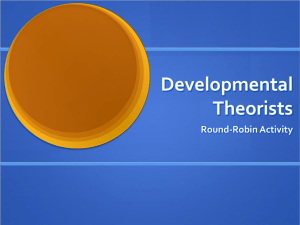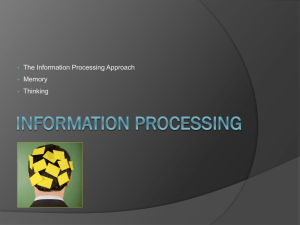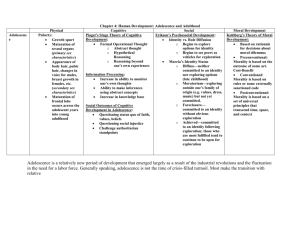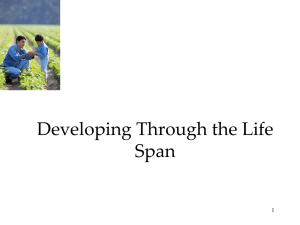m5ch14-17sp08.doc
advertisement
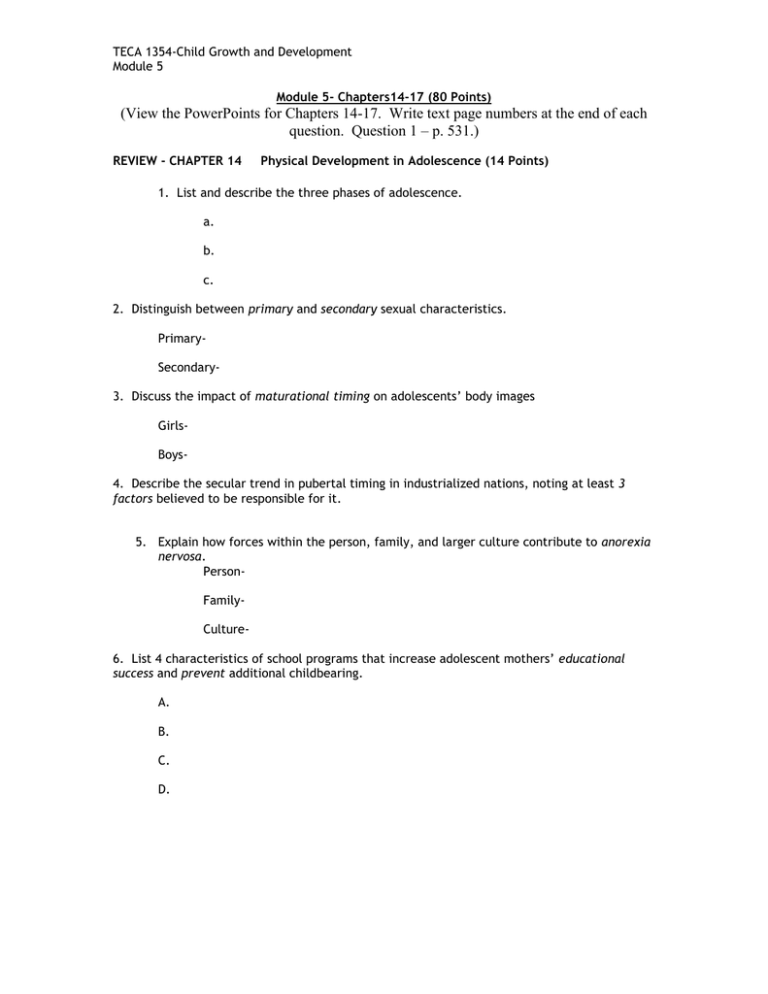
TECA 1354-Child Growth and Development Module 5 Module 5- Chapters14-17 (80 Points) (View the PowerPoints for Chapters 14-17. Write text page numbers at the end of each question. Question 1 – p. 531.) REVIEW - CHAPTER 14 Physical Development in Adolescence (14 Points) 1. List and describe the three phases of adolescence. a. b. c. 2. Distinguish between primary and secondary sexual characteristics. PrimarySecondary3. Discuss the impact of maturational timing on adolescents’ body images GirlsBoys4. Describe the secular trend in pubertal timing in industrialized nations, noting at least 3 factors believed to be responsible for it. 5. Explain how forces within the person, family, and larger culture contribute to anorexia nervosa. PersonFamilyCulture6. List 4 characteristics of school programs that increase adolescent mothers’ educational success and prevent additional childbearing. A. B. C. D. TECA 1354-Child Growth and Development Module 5 7. Discuss 4 ways of preventing STDs. A. B. C. D. APPLY – (6 Points) 8. Sixteen-year-old Jonah, who used to go to bed early, now stays up until 2 a.m., is often late for school, and dozes in his classes. Why might Jonah’s sleep habits have changed, and what can his parents and his school do to help? 9. Describe health education (including drug-use prevention) programs that you experienced in secondary school. Did they assist you in resisting peer pressures to engage in sexual activity and alcohol and drug experimentation? Explain. REVIEW - Chapter 15 Cognitive Development in Adolescence (14 Points) 1. Based on information-processing theory, cite five mechanisms of cognitive change in adolescence. A. B. C. D. E. 2. Summarize the basic difference between Piaget’s concrete and formal operational reasoning. 3. Briefly summarize changes in cognitive self-regulation and comprehension monitoring during adolescence. Cognitive self-regulationComprehension monitoring- TECA 1354-Child Growth and Development Module 5 4. List 4 reasons why adolescents’ grades decline at the transition to secondary school. A. B. C. D. 5. Explain how the development of abstract thought influences adolescents’ argumentativeness. 6. What is the most effective parenting style and why? 7. Explain 2 differences between boys and girls in specific mental abilities, particularly language and mathematics. BoysGirls- APPLY- (6 Points) 8. Diane, a high school senior, knows that she wants to “work with people” but doesn’t yet have a specific career in mind. Her father is a history professor, her mother a social worker. What steps can Diane’s parents take to broaden her awareness of the world of work and help her focus on an occupational goal? 9. Describe the career guidance you received from your family, school, and community. Which relationships and experiences were most influential? What assistance would you have liked that was not available? REVIEW - CHAPTER 16 Emotional and Social Development in Adolescence (14 Points) 1. Explain how both parents and the larger environment influence adolescents’ self- esteem. ParentsSocial Environment2. Discuss Erikson’s notion of an identity crisis. 3. Explain what is involved in constructing an identity. 4. Why do ethnic minority adolescents often experience unique problems in developing a sense of identity? TECA 1354-Child Growth and Development Module 5 5. Describe 3 child-rearing practices that promote gains in moral development. A. B. C. 6. Differentiate between cliques and crowds, noting the characteristics of each. a. Cliques: b. Crowds: 7. Briefly summarize family, school, and community influence that contribute to adolescents’ civic responsibility. FamilySchool- CommunityAPPLY- (6 Points) 8. Zeke had been well-behaved in elementary school, but around age 13 he started spending time with the “wrong crowd.” At age 16, he was arrested for property damage. Is Zeke likely to become a long-term offender? Why or why not? 9. How would you characterize your identity status? Is it the same or different across domains of sexuality, close relationships, vocation, religious beliefs, and political values? Describe your path of identity development in important domains, along with factors that may have influenced it. REVIEW - CHAPTER 17 Emerging Adulthood (14 Points) 1. Describe the new phase of development known as emerging adulthood. 2. Summarize how work-related goals and pursuits differ for young men and women. MenWomen3. Describe two cultural factors that have contributed to emerging adulthood. a. b. TECA 1354-Child Growth and Development Module 5 4. What is postformal thought, and how does college contribute to it? a. Postformal thought: b. College contribution: 5. Summarize cognitive, emotional, and social assets and social supports that support development during emerging adulthood. Cognitive assetsEmotional assetsSocial assetsSocial supports6. Summarize personal attributes and social supports that foster development during emerging adulthood. a. Cognitive attributes: b. Emotional and social attributes: c. Social supports: 7. How might meaningful work activities during adolescence help emerging adults find fulfilling vocations? APPLY – (6 Points) 8. What cultural changes have led to the appearance of the period known as emerging adulthood? 9. List supports that your college environment offers emerging adults in its health and counseling services, academic advising, residential living, and extracurricular activities. How does each help young people master the challenges of this period? GIVE A MAN A FISH AND YOU FEED HIM FOR A DAY. TEACH A MAN TO FISH AND YOU FEED HIM FOR A LIFETIME. Chinese Proverb




